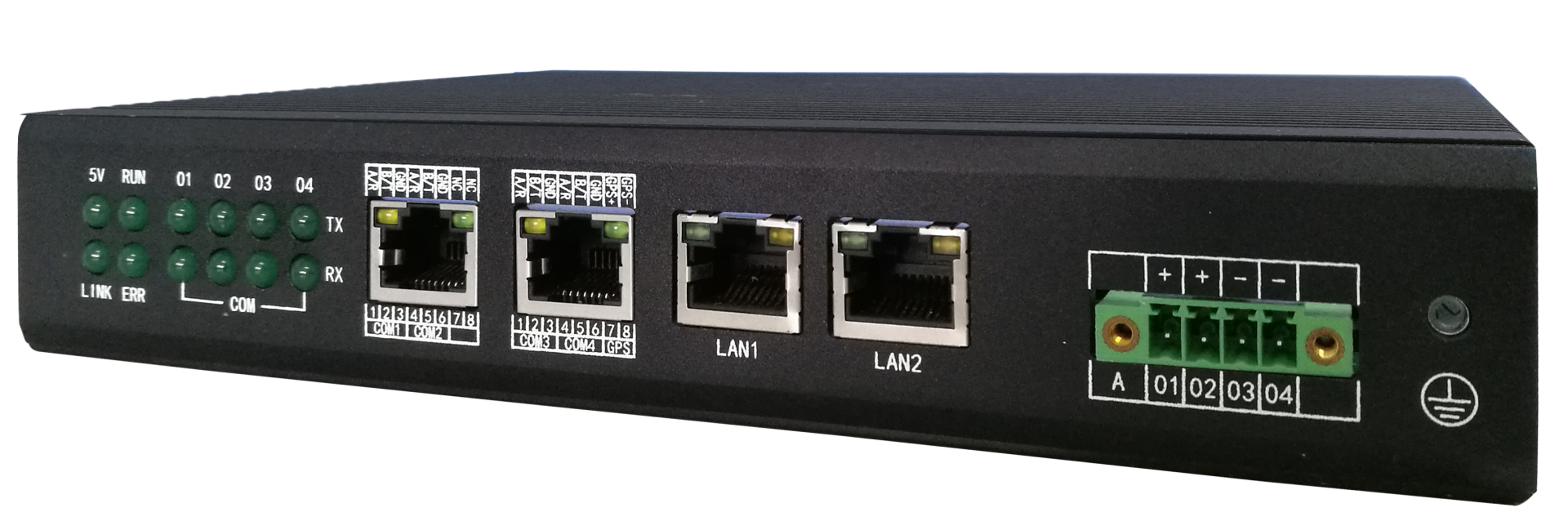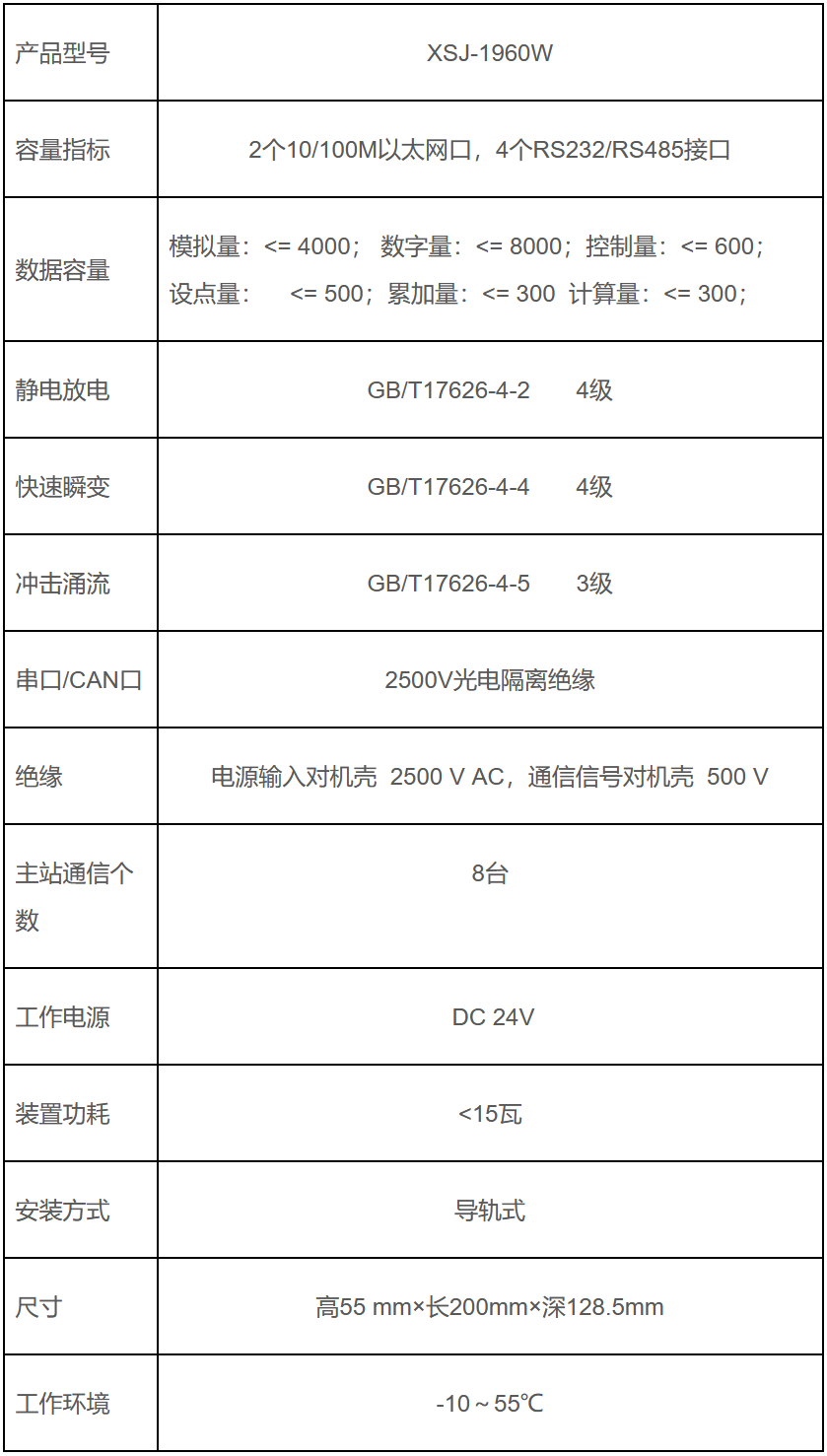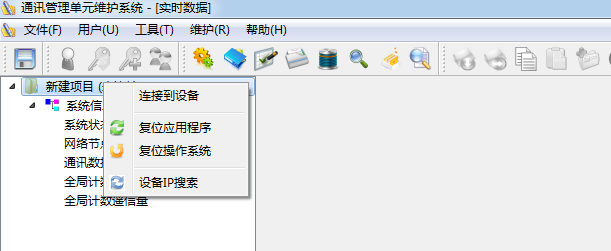Smart Gateway
- Overview
- Main Features
- Main Indicators
- Main functions
- Device Configuration
The XSJ-1960W smart gateway is the core device in the power monitoring management system, a communication management device, equipped with 2 10M/100M Ethernet interfaces, 4 serial ports COM1~COM4 (which can be selected to operate in RS232 or RS485 mode via internal jumpers), and 1 GPS port, featuring high anti-interference performance.
The XSJ-1960W smart gateway is widely used in power system hydropower plants, substations, and is also widely applicable in comprehensive automation systems in fields such as factory waste heat power generation, highway power monitoring, railway distribution and transformation, railway network switch monitoring, sewage treatment, pump station monitoring, steel, petrochemical, smelting, and rail transit.

XSJ-1960W smart gateway
1) Use a highly reliable embedded real-time operating system as the platform to ensure real-time performance and stability.
2) Provide various network communication modes such as dual-machine and dual-Ethernet port redundancy. This offers great convenience and flexibility for system expansion and combination.
3) Equipped with various high-speed and reliable communication interfaces such as industrial Ethernet, serial ports, and CAN field buses for system expansion, greatly enhancing the scalability and configuration flexibility of the device.
4) The device has a wide input voltage range for the working power supply, making it widely applicable to various AC and DC power supply environments.
5) Industrial-grade wide temperature operation, operating temperature -25℃ to 70℃. 6) 2U standard cabinet opening installation method, aesthetically pleasing, and easy to assemble.

1) Implement functions such as communication management, data gateway, data forwarding, protocol conversion, and preprocessing.
2) Communication function with the backend and remote scheduling: The device integrates multiple upper master station protocols internally. These include the CDT, IEC101, IEC104 protocols for upper scheduling, and MODBUS extended protocols, which may include the dual master station P8000 backend host (using the coded 7000 Ethernet slave protocol).
3) Communication function with intelligent devices: The device can communicate with various protection devices and intelligent equipment through different protocols.

4) Multiple communication interface functions: The device provides serial ports, 10M/100M network ports, CAN bus, etc., for communication with various levels of scheduling and centralized control center data networks.
5) It has flexible online and offline debugging methods, reliable program upgrades, permission maintenance, parameter downloading, parameter reading, data querying, message monitoring, raw values, engineering values, and other functions.

6) It has powerful self-diagnosis and self-recovery functions. When the program encounters errors due to external interference or other reasons, the system can recover by itself.

Previous:
The next one:


